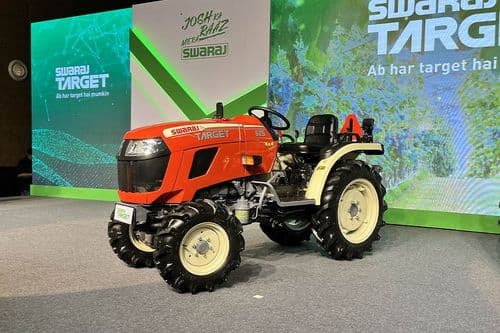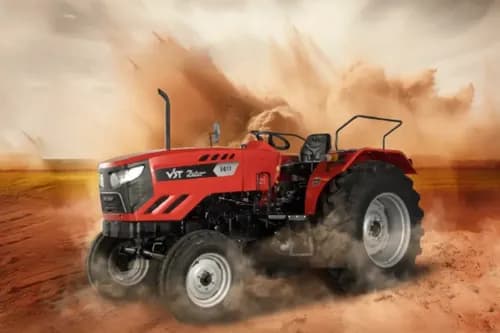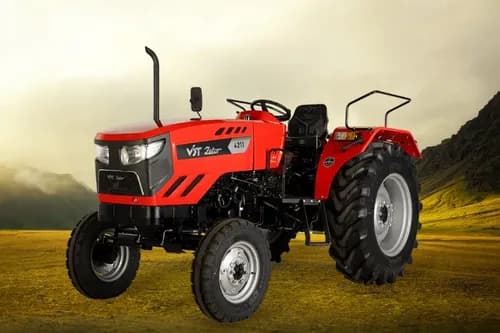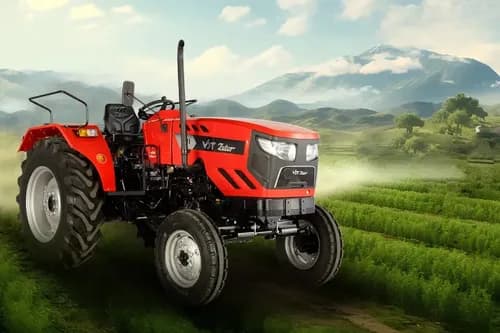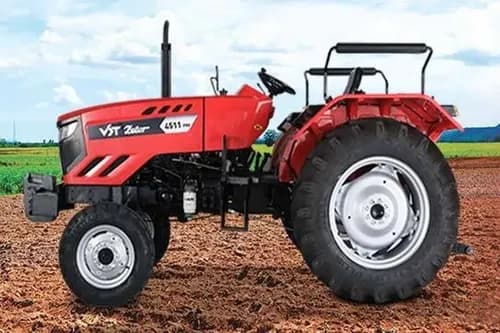Ad
Ad
Vertical Farming In India: Types and benefits
Vertical farming is a modern agricultural technique that involves cultivating crops in vertically stacked layers or inclined surfaces. This article will give you insight into vertical farming in India, types of vertical farming and the potential it holds for the future of agriculture.

In recent years, India has witnessed a shift in its approach to agriculture, with innovative and sustainable practices. One such revolutionary concept gaining traction is Vertical Farming. Vertical farming in India represents a cutting-edge method of cultivating crops in vertically stacked layers or inclined surfaces, often integrated with advanced technologies like hydroponics.
Vertical farming is an innovative method of growing food that combines elements of indoor farming, urban agriculture, and controlled agriculture. Vertical farming involves continuously monitoring and adjusting production factors such as temperature, lighting, fertilizers, irrigation, and air circulation. This article will give you insight into vertical farming in India, types of vertical farming and the potential it holds for the future of agriculture.
Vertical Farming in India
Vertical farming is a modern agricultural technique that involves cultivating crops in vertically stacked layers or inclined surfaces, utilizing various methods such as hydroponics, aeroponics, and aquaponics.
Unlike traditional farming, which relies on large expanses of land, vertical farming maximizes space efficiency by utilizing vertical space, making it an ideal solution for urban areas where land is limited.
Why Vertical Farming in India is Important?
Resource Efficiency: Traditional horizontal farming practices often overuse water, fertilizers, and pesticides. Vertical farming reduces water consumption by up to 95%, a crucial advantage in a country where water scarcity is a pressing issue.
Food Security: India, with its growing population, faces challenges in ensuring food availability for all. Vertical farming offers a way to produce fresh, healthy food in densely populated urban areas throughout the year.
Land Scarcity: India is struggling with land degradation. Vertical farms can transform abandoned buildings and factories into productive spaces, maximizing crop production in limited areas.
Also Read: Precision Agriculture in India: Growing More with Less
How Does Vertical Farming in India Work?
Vertical farming involves stacking layers of plants in controlled environments (such as warehouses or greenhouses). Precise control over light, temperature, and nutrients ensures optimal growth.
Hydroponics and Aquaponics: Techniques like hydroponics (soil-less cultivation) and aquaponics (combining fish farming with plant cultivation) are commonly used in vertical farms.
Benefits of Vertical Farming in India
Water Conservation: Vertical farming drastically reduces water usage, critical in a country where irrigation consumes 84% of available water. Hydroponic and aeroponic Vertical Farming methods are designed to significantly reduce water consumption compared to traditional farming methods, addressing the water scarcity challenges faced by many regions in India.
Transforming Abandoned Spaces: Unused buildings and factories can become fully functional vertical farms. With the growing population and urbanization, space is a precious commodity in India. Vertical farming optimizes space by utilizing vertical structures, making it possible to cultivate crops in urban areas.
Provide Fresh Vegetables: In densely populated cities like Delhi and Mumbai, vertical farms can supply fresh vegetables, herbs, and fruits year-round.
Increased Yield: Estimates suggest that a 30-floor vertical farm could produce the equivalent of 2400 acres of horizontal farming. Vertical farming allows for controlled environmental conditions, enabling year-round cultivation. This is especially beneficial in regions with extreme weather conditions, ensuring a consistent and reliable food supply.
Demerits of Vertical Farming In India
High Initial Capital Costs: Establishing a vertical farm requires significant upfront investment in technology, infrastructure, and controlled-environment systems. The cost of setting up vertical farms with advanced equipment such as LED lighting, automated systems, and climate control can be expensive for many potential investors.
Limited Crop Variety: Vertical farming is most economically viable for certain types of crops, such as leafy greens and herbs. Growing larger and more complex crops, like fruiting vegetables or trees, in vertical systems is challenging due to space constraints and the need for different cultivation methods. This limitation can restrict the variety of crops that can be economically produced through vertical farming.
Energy Consumption: The energy requirements of vertical farms, particularly for artificial lighting and climate control, are more as compared to other methods of farming. The use of high-powered LED lights to simulate sunlight for photosynthesis and maintain optimal growing conditions contributes to increased energy consumption, which may counteract the environmental benefits associated with reduced land use.
Technical Challenges: Vertical farming involves complex technological systems, and technical failures or malfunctions can have significant consequences. Issues with climate control, irrigation, or automation systems can lead to crop failures and financial losses. Maintaining and troubleshooting these advanced systems require specialized skills and knowledge.
Dependency on Non-Renewable Resources: Many vertical farms rely on synthetic fertilizers and energy derived from non-renewable sources. This dependency can counteract the sustainability goals of vertical farming, especially if these resources are not produced or used in an environmentally friendly manner.
Limited Crop Yield Density: While vertical farming allows for the stacking of crops in vertical layers, the overall crop yield density may not always be as high as expected. Plant spacing and light penetration can affect the productivity of crops on each level, and achieving optimal conditions throughout the entire vertical structure can be challenging.
Environmental Impact of Equipment Production: The production and disposal of the high-tech equipment used in vertical farming, such as LED lights and automated systems, contribute to environmental impacts.
Types of Vertical Farming
Hydroponic Vertical Farming
Hydroponics Vertical Farming is a popular method in vertical farming where plants are grown without soil. Instead of soil, nutrient-rich water solutions are used to deliver essential minerals and nutrients directly to the plant roots. This method not only conserves water but also eliminates the need for traditional soil, reducing the risk of soil-borne diseases and pests.
Hydroponic vertical farms rely on nutrient-rich water solutions to supply plants with essential nutrients, promoting faster growth and higher yields. In vertical farming, hydroponics allows for precise control over nutrient levels, temperature, and light, creating optimal conditions for plant growth.
Advantages of Hydroponics Vertical Farming in India
- Hydroponics significantly reduces water usage compared to traditional soil-based farming.
- It allows precise control over nutrient delivery, resulting in faster growth and higher crop yields.
- Plants are cultivated in vertically stacked layers within controlled indoor environments equipped with artificial lighting and hydroponic systems.
Aeroponic Vertical Farming
In aeroponic vertical farming, plants are suspended in the air and receive nutrients through a misting system. Aeroponics involves growing plants in an air or mist environment without soil or water. Plant roots are suspended in a nutrient-rich mist, providing them with the necessary nutrients.
Advantages of Aeroponics Vertical Farming
- Aeroponics is highly efficient in water usage.
- It can lead to faster growth rates and increased productivity.
- Aeroponic systems are designed to create a mist environment for plant roots, promoting optimal nutrient absorption.
** Aquaponics Vertical Farming in India**
Aquaponics combines aquaculture (fish farming) with hydroponics. It’s a combined system where fish waste provides nutrients for plants, and the plants filter the water for the fish. The fish waste provides nutrients for the plants, and the plants help purify the water, creating a sustainable and closed-loop system.
Advantages of Aquaponics Vertical Farming
- Aquaponics efficiently recycles nutrients, benefiting both plants and fish.
- It minimizes water pollution and conserves water.
- Aquaponic systems integrate fish tanks and hydroponic beds, creating a closed-loop ecosystem.
Vertical Net Farming
One innovative subset of vertical farming in India gaining popularity is vertical net farming. This method involves growing plants in vertical columns or structures, often using nets or mesh. The plants are positioned to receive adequate sunlight and airflow, promoting healthy growth.
Vertical net farming offers advantages such as efficient use of space, improved accessibility for harvesting, and reduced susceptibility to soil-borne diseases.
Also Read: Top 5 New Holland Tractors To Buy In India: Specifications, Features and Price
Challenges in Vertical Farming in India
Vertical farming, with its innovative techniques and sustainable practices, holds immense potential to revolutionize food production and address the challenges faced by traditional agriculture. It also faces challenges such as high initial costs, energy consumption, and the need for skilled manpower.
Overcoming these challenges requires collaborative efforts from the government, private sector, and research institutions to promote research, development, and the adoption of vertical farming technologies.
Conclusion
In conclusion, vertical farming is gradually transforming the agricultural scenario in India. With its potential to address issues of space constraints, water scarcity, and environmental sustainability, vertical farming in India represents a crucial step towards ensuring food security for the growing population.
By maximizing space utilization, minimizing resource consumption, and enabling year-round crop cultivation, vertical farming offers a promising path toward a more strong and food-secure future. As technology continues to advance, the future of agriculture in India looks bright with the integration of innovative and sustainable practices like vertical farming.
Features & Articles
Modern Tractors and Precision Farming: Transforming Agriculture for Sustainability
Precision farming enhances agriculture by integrating GPS, AI, and modern tractors for sustainable, efficient, and productive farming practices in India....
05-Feb-25 11:57 AM
Read Full NewsTop 10 Tractors Under 30 HP in India 2025: Guide
Top 10 tractors under 30 HP in India offer efficiency, affordability, and power, ideal for small farms with diverse agricultural needs....
03-Feb-25 01:17 PM
Read Full NewsNew Holland 3630 TX Super Plus vs Farmtrac 60 PowerMaxx: Detailed Comparison
Compare New Holland 3630 and Farmtrac 60 tractors by specs, price, and features to find the perfect fit for your farm....
15-Jan-25 12:23 PM
Read Full NewsSwaraj 735 FE Vs Eicher 380 2WD Prima G3: Detailed Comparison
The Swaraj 735 FE and Eicher 380 2WD Prima G3 are reliable, powerful tractors suited for various farming tasks....
14-Jan-25 09:41 AM
Read Full NewsHow to Choose the Perfect Tractor for Your Farm: A Comprehensive Guide
Choose the right tractor by assessing farm needs, horsepower, efficiency, comfort, and budget to enhance productivity and savings....
09-Jan-25 09:43 AM
Read Full NewsTop 7 Sonalika Mini Tractors for Efficient Farming
Explore the top 7 Sonalika mini tractors, featuring compact designs, advanced features, and affordable prices for efficient farming....
06-Jan-25 10:27 AM
Read Full NewsAd
Ad
As featured on:


Registered Office Address
Delente Technologies Pvt. Ltd.
M3M Cosmopolitan, 12th Cosmopolitan,
Golf Course Ext Rd, Sector 66, Gurugram, Haryana
pincode - 122002












